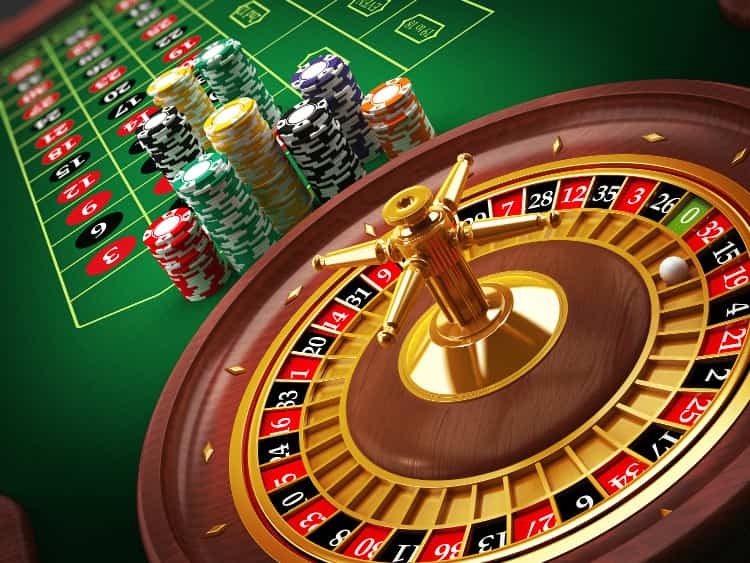Within a lively and stimulating world of casinos, where fortune and tactics intertwine, hues and design play a pivotal role in attracting gamblers. As soon as visitors step into a casino or log into a gaming platform, they are enveloped in a sightly feast that captures their attention and lures them to explore further. Bright colors, engaging graphics, and creative layouts are meticulously crafted to create an environment of excitement and anticipation, ultimately improving the gaming encounter.

While gamblers navigate through the ever-changing landscape of casino games, they encounter a variety of designs that not only serve visual purposes but also affect emotions and choices. Colors like scarlet and gold symbolize riches and fortune, while soothing blues and emeralds can create a much relaxed environment. Grasping how these elements work together enables casinos to create an welcoming and stimulating atmosphere that encourages players to interact with the games, spend more time at the tables, and increase their overall enjoyment.
The Study of Tint in Gambling Games
Color plays a key role in the design of gaming experiences, affecting player emotions and actions. Bright and bold colors, such as crimson and gold, are often used to stimulate thrill and draw attention. These shades create a sense immediacy and dynamism, encouraging participants to participate more readily with the experience. By thoughtfully selecting tints, developers aim to inspire feelings of joy and excitement, which can enhance the overall player experience.
Distinct hues also have psychological connotations that can impact how participants perceive their possibilities of success. For case, emerald is often associated with luck and wealth, making it a well-liked choice in activities like the roulette wheel and poker games. 99win This association can result participants to feel more optimistic and confident in their gaming, ultimately motivating them to wager more. Comprehending these links allows game developers to design environments that enhance player happiness and loyalty.
In addition, the design of gambling game interfaces often employs color gradients and contrasting colors to instruct players’ responses. For example, winning outcomes may be highlighted with bright, contrasting shades, creating a visual cue. This approach strengthens successful results and supports repeated engagement. By leveraging the science of color, casinos can design activities that not only attract gamblers but also maintain them involved and committed in their gaming experience.
Design Features that Attract Players
The visual appeal of gambling games is largely influenced by the use of bold colors. Bright and striking colors are strategically chosen to create an appealing atmosphere that grabs interest. For instance, reds and golds often signify good fortune and wealth, which is why they are prevalent in the color schemes of slot machines and game surfaces. These colors not only attract players in, but they also stir emotions associated with excitement and anticipation, enhancing the total gaming experience.
In parallel to color, the aesthetic and organization of gambling games play a significant role in captivating players. Games are designed to be intuitive, ensuring that players can quickly understand the rules and mechanics. User-friendly interfaces, along with engaging graphics and animations, help maintain gamer interest and encourage extended play sessions. The tactile elements, such as the feel of the buttons and the sounds of the games, also add to a comprehensive sensory experience that keeps players immersed.
In conclusion, conceptual elements in game design can significantly influence gaming decisions. Many casino games are inspired by media, fairy tales, or adventure themes, featuring symbols and characters that resonate with players. These themes create a sense of engagement and relatability, making each game feel unique. When players feel a connection to the concept, they are more likely to choose that game over others, leading to increased participation and excitement within the casino environment.
Case Studies: Effective Gambling Table Game Designs
One key example of successful gambling game design is the well-known slot machine series based around hit movies. Games such as those based on the Wizard of Oz and Game of thrones utilize dynamic colors and top-notch graphics to immerse players in well-known narratives. The use of moving visuals and captivating sound effects grabs the interest of players, building an psychological connection to the theme. This tactic merely fosters longer play but also boosts the overall gaming experience, leading to increased player retention.
Another effective case is the use of color psychology in table games like blackjack and roulette. Casinos often design these games with dark reds and greens, colors traditionally connected with luck and wealth. For instance, the emerald felt on a blackjack table provides a relaxing effect, while the crimson accents in roulette invite thrill. This intentional use of color helps to foster an inviting atmosphere that encourages players to join in, fulfilling their psychological impulses and enhancing their enjoyment. Xổ số 99win
Finally, social casino games that include social features and lively, lively designs have experienced remarkable success in engaging players. Games like Zynga’s Poker and Slot-O-Mania leverage vivid colors and playful animations to create an inviting online environment. The inclusion of leaderboards, social sharing options, and in-app rewards promotes competition and community, pulling players in for longer sessions. Such designs not just make the games visually appealing but also underscore social connectivity, a vital factor in player retention and engagement within online casino environments.
